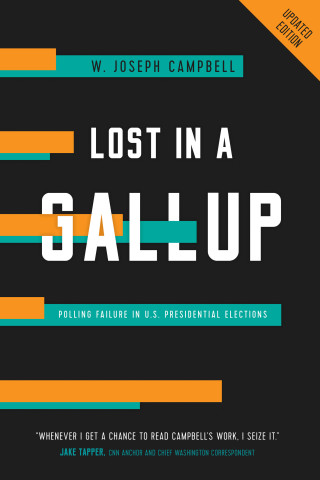In 2016, I experienced the desolation of my candidate for president losing after the most respected polling experts told me she had a 71.4 percent, 85 percent, 98.2 percent, and even 99 percent chance of winning. As a historian, I was studying how Ronald Reagan’s runaway landslide in 1980 was proceeded by every pollster but one supremely confident that the race was just about tied. I’ve just finished a fine book published in 2020 that confirms an intuition I’ve been chewing on since then. It turns out this is practically the historical norm. W. Joseph Campbell’s Lost in a Gallup: Polling Failure in U.S. Presidential Elections demonstrates—for the first time, strangely enough, given the robust persuasiveness of its conclusions—that presidential polls are almost always wrong, consistently, in deeply patterned ways.
Unusual for any historical narrative, the pattern is almost unchanged for a good hundred years. First, someone comes forth with some new means of measuring how people will vote for president, and gets it so right it feels like magic. That was the accomplishment of a magazine called The Literary Digest between 1924 and 1932. They sent as many sample ballots as existing technological infrastructure would allow—in 1932, some 20 million—on postcards that doubled as subscription ads. Then, with the greatest care, they counted the ones that came back. For three straight elections, they got it so right the Raleigh News and Observer half-joked that it “would save millions in money and time” to “quit holding elections and accept the Digest’s poll as final.”
In 2008, that was the accomplishment of Nate Silver, who called 49 out of 50 states; in 2012, he notched 50 for 50, scored a best-selling book, and reportedly accounted in the run-up to the election for 20 percent of the traffic for his new employer, The New York Times.
In part two of the cycle, yesterday’s miracle suffers a spectacular failure—as in the poll-crazy year of 1936, when modern political polling was invented by the triumvirate of George Gallup, Elmo Roper, and Archibald Crossley, who all called it for Roosevelt over Alf Landon, where the Digest only gave him 41 percent of the popular vote. Their technical revolution (directly querying a representative sample of the electorate) seemed so obvious in retrospect, you wonder how nobody thought of it before. The same with Silver’s model of aggregating, then evaluating and weighting for accuracy, existing state polls.
They’re cocky about it; that’s a pattern, too. That’s what tends to proceed their most spectacular failures.
